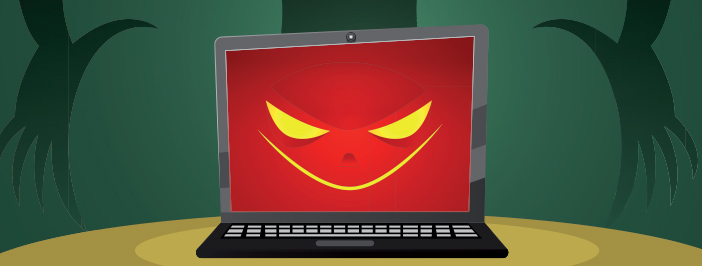Virus vs. Worm: How to Identify and Slay Your Network Monsters
The glossary of adversaries to your network security will continue to grow so long as cyberattacks continue to happen, and the various cyber-monsters can be difficult to differentiate. That being said, two of the most prevalent security threats are easy enough to remember when you compare them to legendary monsters. Enter the virus and the worm.
What they have in common…
Viruses and worms are both cyberattacks that are detrimental to your business. They are also both financial blackholes. In 2016, viruses and worms contributed to $450 billion in financial losses due to cybercrime. On an individual level, cyberattacks can cost businesses up to $40,000 per hour.
The end result for both a virus and a worm is to damage your network and cost you money and time. The primary difference is in their approach.
A virus is like a vampire…
One easy way to conceptualize a computer virus is to think of it as a vampire.
If a vampire wants to infect you with vampirism and turn you into a member of the nocturnal undead, it will require some human error. Just like you might encounter a vampire if you take a shortcut down a dark alley, you might catch a computer virus by visiting a harmful URL or downloading software that isn’t secure. There’s always an element of human participation.
And we all know that a vampire can’t come into your house unless it is invited. That’s exactly how a virus works.
Many times, it’s easy to spot a computer virus. It’s just a little bit out of place. Just like when a vampire comes over to your house wearing his best 1970s “date night” outfit. There’s just something that’s a bit off. Viruses are often given away by emails or URLs that don’t look quite official – anything from misspellings to unfamiliar names to complex Web addresses to simply uncomfortable requests to share or exchange information. If it strikes you as strange, it probably is.
If you fail to see the signs and unwittingly invite a vampire into your house, he/she/it will probably give you a bite, infect you, and you’ll soon be investing a lot of money in sunglasses, wide-brimmed hats, and umbrellas.
When you open the door to a computer virus by opening attachments or downloading certain files or programs, it will use that program to overload your system and eat up your random access memory, freeze certain resources or take over certain functionality. This in turn leads to slower computing, crashes, and total destruction of the computer system.
One recent example is the “Bad Rabbit” ransomware virus, which spread from Russia to the USA. Ransomware will famously extort money from users in exchange for data, and the average ransomware attack has risen to $1,077.
Computer viruses act just like the vampire virus. They both require a host to infect their victim, and they both greatly alter the health of their prey.
A worm is like a werewolf…
If a virus is like a vampire, then a worm is like a werewolf.
When werewolves want to attack, they have no intention of waiting for you to invite them inside the house. They enter and they either eat you or they bite you and turn you into a werewolf. This is exactly how a worm works on your network.
Worms are cyberattacks that disrupt your network by exploiting weaknesses and self-replicating. One famous example is the recent WannaCry ransomware attack, which infected more than 300,000 computers in a few days, by using worm techniques to infiltrate Windows and spread across LAN and WAN connections.
Unlike the computer virus, they require no human error. Worms can piggyback in on websites or attachments, and then spread exponentially across your network to other files.
While a virus is dangerous, it is typically isolated to a certain program or system resource. A worm, however, will discover any weaknesses and exploit them.
How to slay your network monster…
The best way to win a fight against a vampire or a werewolf is to a.) avoid inviting them in, and b.) fortify your home against them. Hanging garlic on the windows and carrying a silver sword just in case is always a good idea.
For your business to fight a computer virus or worm, you need to invest in solid preparation and protection for your network. This means having a virus protection plan, training your team and downloading all of the relevant patches on an ongoing basis.
When you work with RWA as your managed service provider, we’ll create a comprehensive solution that will help prevent and combat cyberattacks of all kinds.
Reach out to us to learn more about different cyberattacks and how to stop them.











